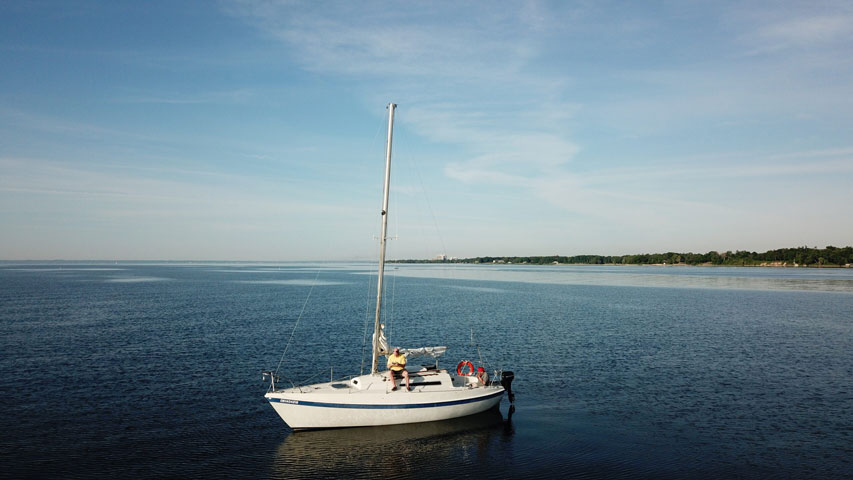Purchasing a new Head Sail for your sailboat is one of those investments that every sailor will be faced with eventually. Sails don’t last forever, even if you treat them like gold. Once you have decided to invest in new sails you may get that feeling of being over whelmed by the choices and the details involved. When deciding on a loft to work with make sure you choose a loft that will offer a good consultation on the cloth and sail feature choices as well as a design consultation if you want one. Don’t be scared into paying extra for a sail just because your local loft tells you it’s hard to measure. You do not need the added expense of having someone come to your boat and measure for your new sail. If you can read a tape measure you can measure your boat for a new Jib or Genoa.
Measurements Required for a New Head Sail:
Rig Specs – The first thing that you are going to want to find are the General Rig Specs I,P,J,E for your boat. You can get these from your boat manufacturer, online or in your boat manual. These will be used to ensure that the loft you are working with has quoted you the correct size of sail and to ensure that when you take your measurements they are accurate.
Existing Head Sail – Measure your existing Jib or Genoa sail’s general dimensions. Luff (leading edge of your sail), Leech (trailing edge of your sail) and the Foot of your sail. These measurements will be used to compare the measurements that you take from your rig to ensure that everything is working out well. It will also give your designer an idea of what the current sail size is. If you are ordering a sail that is going to add to your inventory of head sails the only measurement that is of benefit is the luff length.
Rig Measurements – Now we are going to get onto the boat and start to take the measurements of the rig as it sits today. This will ensure that your sail designer is designing a sail for your boat and not the boat that it started as. The two measurements that are required are the I measurement and the J Measurement. The I is the the distance from your the top of your halyard to the base of your mast. This is taken by hauling a tape measure up your halyard until it reaches the top and measuring straight down to the base of your mast. While you have your tape at the top take the time to also measure the maximum luff length by measuring to the attachment on your furler or on the deck (hank on sails). The J measurement is done by measuring from the base of the mast to the attachment of your fore stay.

How to Measure the Maximum Luff Length of your Genoa or Jib
Now that we have the basic dimensions for your sail it’s time to get into the details that will ensure that your sail will fit the day it arrives.
Luff Specifications: Furling Head Sail or Hank On
Furling head sails attach to your furling system using luff tape. It is a cord or rope warped inside of a tape. Each Furling System will have a specific luff tape size that will slide nicely up the track without coming out while under force.
The best way to measure the tape is to use Calipers that can measure in millimeters. If you don’t have a set use a set of drill bits and either slide them up the track in your furling system or hold them up to the luff tape on your existing sail to determine the proper size.
Luff Tape Specification chart below:

Track Measurements:
Your sail designer will want to know where your tracks start and stop to ensure that the new sail will be designed with the proper sheeting angles. Attach your tape to the base of the fore-stay and measure to the start and the end of each set of tracks.

J Measurement Video:
Track Measurement Video:
Water Line Measurement:
A good measurement to provide your sail designer is the distance from the waterline to the fore-stay and from the waterline to the base at your chain plates. These measurements will let your designer ensure the clew height of new Jib or Genoa.




